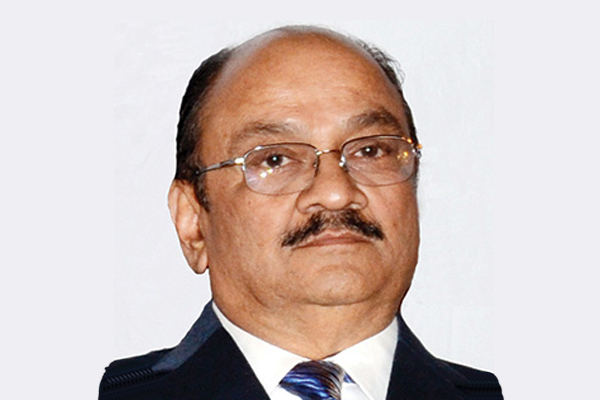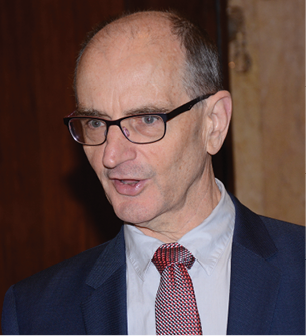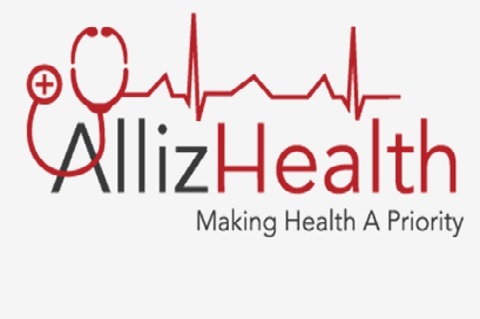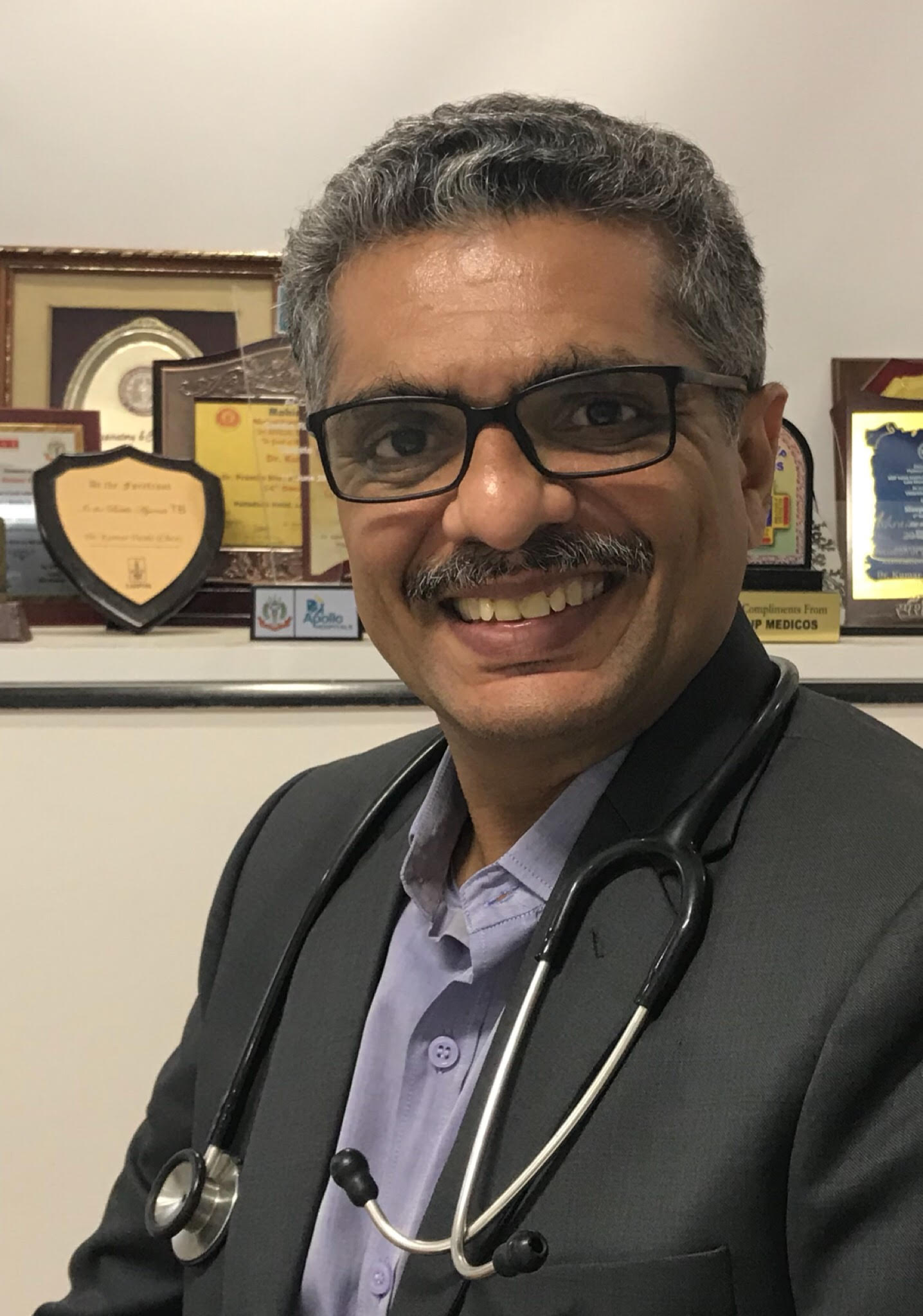
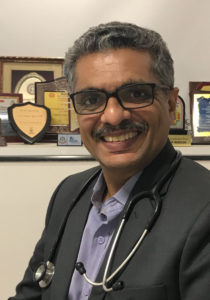 India’s healthcare system cannot afford to remain complacent or in denial anymore on the increasing health threats from pulmonary diseases. Pulmonary diseases affect the quality of life, impact the socio“economic state of the patient and the family, writes Dr Kumar Doshi, Consulting Pulmonologist, KJ Somaiya Hospital Super Specialty Centre.
India’s healthcare system cannot afford to remain complacent or in denial anymore on the increasing health threats from pulmonary diseases. Pulmonary diseases affect the quality of life, impact the socio“economic state of the patient and the family, writes Dr Kumar Doshi, Consulting Pulmonologist, KJ Somaiya Hospital Super Specialty Centre.
According to the World Health Organisation, tuberculosis (TB) ranks among the top 10 global causes of death, with India accounting for one-third of the worlds total number of TB cases, as per the Indian Society for Clinical Research. Reports show that the disease kills about one patient per minute.

An alarming increase in pulmonary disease has been in the area of COPD (Chronic Obstructive Pulmonary Disease) and Asthma with a quarter of deaths caused worldwide in India. Currently being the 6th leading cause of death, with the rise in unchecked pollution it is slated to become the third leading cause of death by 2030.
COPD lung conditions that cause breathing difficulties include emphysema and chronic bronchitis. Smoking and air pollution largely cause the disease. India also now tops the dubious list of highest number of early deaths due to ozone pollution.
India’s healthcare system cannot afford to remain complacent or in denial anymore on the increasing health threats from pulmonary diseases. Pulmonary diseases affect the quality of life, impact the socio“economic state of the patient and the family.


With increasing number of people dying early and falling ill and losing productive years due to tuberculosis, asthma and COPD, a nation-wide intervention is needed to address the various issues that cause these ailments.Conditions like interstitial lung diseases and lung cancers add to the ever-growing list of crippling diseases of the lung.
TBs resurgence is a cause for worry. Tuberculosis (TB), amycobacterial infection that usually affects the lungs, spreads through sustained contact between people living or working in proximity. It is 99% curable. However, the drug-resistant type of TB carries 40% mortality and can be fatal. TB spreads easily by aerosol droplet route. Droplets can travel 4-8 feet while talking or coughing, which makes transmission very easy. It is estimated that one patient of TB can spread to at least 10 new patients. Practically everyone is susceptible
It needs emphasis that TB is not a poor mans disease. With the crowding and poor hygiene in community spaces, two in five people in India have TB infection but do not develop the disease because of their robust immune system. The disease manifests when a persons immunity falls due to, tiredness, being malnourished due to dieting or eating erratically. We must not forget obesity is also a malnourished state in this regard.
Signs of TB
A cough that lasts two weeks or longer
Coughing up mucus or blood
Fatigue
Loss of appetite
Low fever
Loss of weight
Chills
Night Sweats.
Key to control
Early diagnosis – any cough more than two weeks and or unexplained weight loss and or prolonged fever shouldbe investigated.
Sputum tests are the easiest way to diagnose.
Genxpert (done free at many places) can diagnose the deadly MDR TB in 2 hours.
Tb culture in all cases is the cornerstone in treatment – sadly a step fatally ignored and missed by even the medical fraternity at all levels.
Airway diseases
Chronic Obstructive Pulmonary Disease (COPD) — progressive lung diseases are characterised by increasing breathlessness, even leading to death in extreme cases.
In COPD, the airways are narrowed or blocked, making it difficult to empty the air out of the lungs making breathing difficult.
Asthma is characterised by coughing, wheezing, chest tightening and shortness of breath, a few times in a week or several times in a day. Symptoms can worsen in the night, while exercising, due to cold air or in the morning. Quite often the only symptom could be just a non responding cough.
Often, Asthma and COPD can be treated or prevented with affordable interventions, but unfortunately usually goes undiagnosed or undertreated as the taboo of considering Asthma something to be hidden, people do not accept the diagnosis & hence delay treatment. In one study 30% of all hospitalised patients, admitted for reasons other than the lung had obstructive airway disease which was never diagnosed. This is more so specially in childhood asthma, where parents reluctance to accept the diagnosis leads to worsening of disease and even stunted growth.
Diseases like Asthma and COPD are made worse by the environment pollution- indoor and outdoor. It can be said that living in metros like Mumbai, Bangalore Delhi is like smoking 20 cigarettes a day. One hour of being exposed to Dhoop is like smoking 200 cigarettes. Other common miscreants being the incandescent, mosquito coils, repellents and liquidators. In one study 25% of all priests (exposed to smoke) have obstructive airway diseases. A dangerous professional hazard indeed.
The cornerstone of diagnosis is a pulmonary function test (PFT).
Inhaler therapy is the safest and most effective way of treatment which still people are reluctant to accept, for the fear of addiction.
Of late in asthma a new treatment called BT (bronchialthermoplasty ) has been introduced. In this, a flexible tube is passed in the lungs, and controlled heat is applied in the airways of patients who dont respond well to conventional treatment.
For COPD new treatments, which are keenly awaited, are Endobronchial valves, which can be placed in the lungs via a flexible bronchoscope. This procedure is called Bronchoscopic lung volume reduction.
There is another innocuous condition called sleep apnea. Awareness about this condition is very limited even amongst doctors.
Obstructive Sleep Apnea
One disease by far the most under recognised health problem which needs special mention is the obstructive sleep apnea. This occurs in 4-8% of the whole population and about 25% of all those who are snorers. Typically obese (10% non-obese) and heavy snorers these patients pay a significant price for non-treatment with 20 times higher risk of heart attacks and strokes.
This problem cuts across the age groups, though in young children it is quite often due to large tonsils or adenoids and can be treated with surgery.Patients afflicted are sleepy throughout the day, lazy, less energetic, get up unfresh and irritable. These diseases can be treated by application of a mask on the nose called CPAP. The results are almost dramatic.
Interstitial lung disease
These are a group of diseases that lead to fibrosis of the lungs, which makes the lungs stiff. There are very few options for these diseases. Quite often the only recourse to these diseases is only steroids. Of late two new drugs Pirfenidone and Nintendanib are available even in India to counter these diseases. These are promising drugs being introduced for the disease which otherwise carries a very grim prognosis. The incidence of these diseases is definitely on the rise and is being attributed to the increasing levels of pollutants. Lung transplant is the eventual choice for these patients, which is in a very nascent stage in our country.
Lung cancer
Though it is common knowledge that smoking is a common cause, non-smoking lung cancer is also very prent. Lung cancer is no longer a disease of the elderly and is increasingly seen among young adults even in their thirties.
If diagnosed in earlier stages(less than 2a), surgery carries good outcomes ( 5 year survival more than 90%). With the advent of modalities like PET scan, one can stage the disease fairly early and make the treatment easier. Still newer tests like the EBUS bronchoscopy (Endobronchial Ultrasound) can diagnose and stage the lung cancer early , easily and with higher accuracy which can dramatically improve outcomes. As of today there are about 120 centres across the country offering this. As Lung cancers are becoming quite common, increasingly diagnosed, and with improving healthcare, these patients survive longer with increasing health care needs and palliative treatment. Early surgery is the key and with availability of the path breaking robotic surgery improves outcomes.
We have come a long way in diagnosing and treating pulmonary diseases early and more effectively. But alas the spectrum and frequency of these are evolving at a much faster rate. A nationwide awareness and campaign towards breathing cleaner air, 25,000 litres of which we inhale daily is the need of the hour as most of these problems can be mitigated by this step.
Be a part of Elets Collaborative Initiatives. Join Us for Upcoming Events and explore business opportunities. Like us on Facebook , connect with us on LinkedIn and follow us on Twitter , Instagram.





